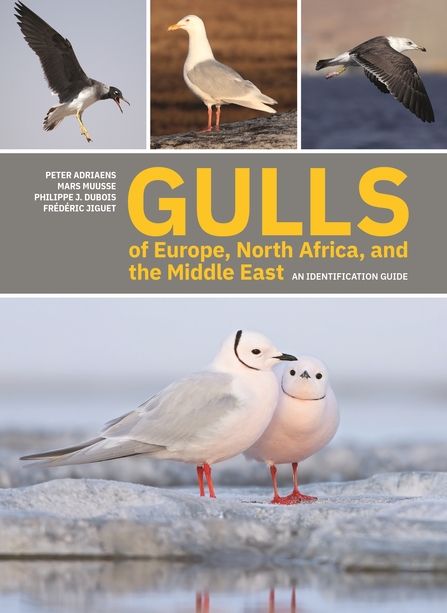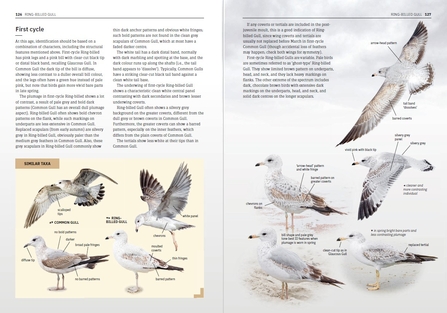
Book Review - Gulls of Europe, North Africa and the Middle East.
Melanie Harris

They can look similar, have different plumages as they mature, and can be a daunting group to get to grips with. Well, not anymore thanks to this great book that eradicates those thoughts and provides some excellent identification tips.
What I particularly like about this book is the whole layout. In the introduction for example, there is a list of the gulls in terms of small, medium and large which straight away helps to eliminate species. The pictures are of an excellent quality showing the different moult cycles for each gull, from the 1st cycle (or what is sometimes known as a 1st year-bird) to the third cycle and then adulthood. This has proved really useful in getting to grips with the different species and gives a better idea of the 'immature' gulls we can often see amongst the adult birds, and often wonder what they are.
There are species that are still 'lifers' for me such as Sabine's, Laughing and Franklin's Gulls, but now from studying their different plumages and key features, I feel more confident that I won't overlook one on my travels. One of the trickiest gulls I find personally is Bonepart's Gull - but this book shows it as a comparison species next to a Black-headed Gull with the key features pointed out, now it is quite obvious as to the differences. The book has some great comparison species which is really useful, such as a Common Gull next to both Caspian and Herring Gull.

The pictures are very well presented and laid out, and each species is shown from the first cycle through to the adult stage, so the differences can really be explored now, and with notes on the key features, everything is beginning to fall into place. Coupled with this, there are pages covering small, medium and large hybrid gulls which is very useful.
With more gull species being split and being seen more often, this book allows you the option of getting to grips in advance of what to look out for. I even got to learn about gulls I had never even heard of such as Viking, Heuglin's and Short-billed Gull. There are some great additional notes on identification and a full list of the topographical terms.
To sum up, this is one of the best books I have seen so far on gulls, and it is packed with identification tips and features, and excellent, clear and concise pictures. From studying this book, I now feel a lot more confident in separating the gulls regardless of their age, and find myself actually keen to learn more as opposed to the usual shying away from this large group of birds. It is a great reference book to check any field notes made later and is set out in an easy-to-follow format which is a welcome change. I thoroughly recommed this book to the beginner and expert alike.
Neville Davies - Author and GWT member. @ecology_cymru

